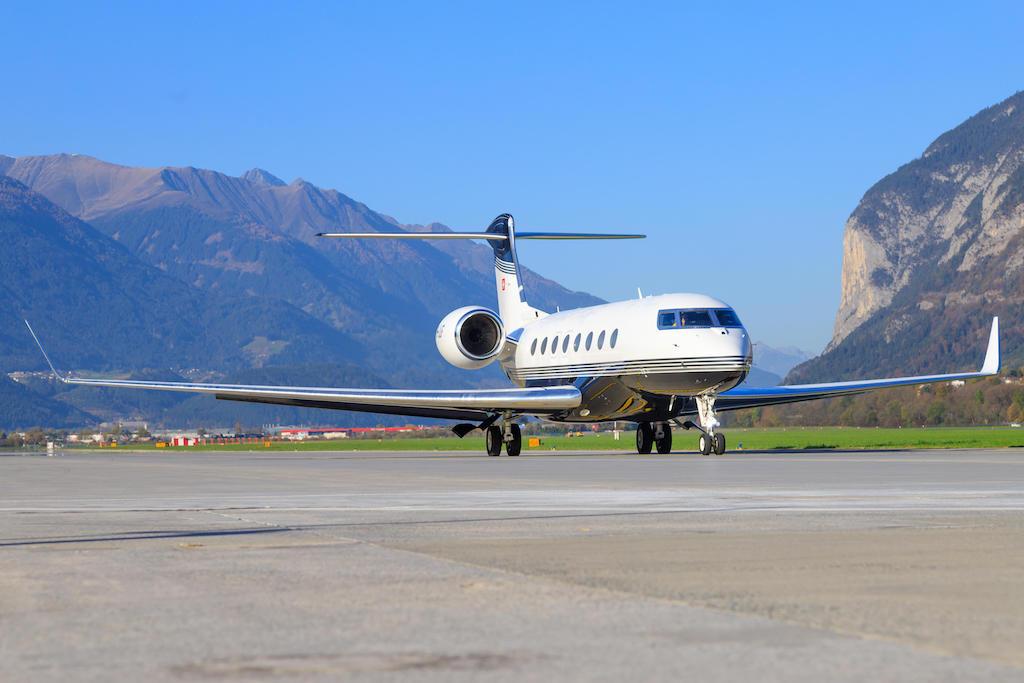
In Part 2, we discussed Learjet’s research into improving the stall characteristics of its aircraft.
Bombardier’s Clinton E. Tanner, senior technical advisor of flight sciences, points out that miniscule differences from one wing to another can cause one wing to stall before the other. The aircraft will lose lift asymmetrically and rapidly roll, as well as experience a nose-up pitching moment. The down-going wing experiences a local increase of angle of attack due to the roll rate and goes deeper into the stall. Loss of aileron power means the roll cannot be arrested and the rudder is ineffective for picking up the down-going wing because the wing is stalled. If prompt recovery action is not taken the bank angle can become large and AOA may rapidly increase.
Wind-tunnel and flight-test data show that modern high-performance airfoils stall at lower AOA when the wing leading edge is contaminated. This is unfortunately reflected in accident trends involving high-performance business jets. A published study by this author presented to the International Society of Air Safety Investigators found that nine of the 31 stall-related loss-of-control accidents that occurred in business jets between 1999 and 2007 involved icing. These involved abrupt, uncommanded rolls that occurred without warning and transpired during the landing phase with insufficient altitude for recovery.
According to the NASA Glenn Research Center and the National Research Council Canada, anti-icing fluid can markedly reduce the critical angle of attack to 15.3 deg., as opposed to 20 deg. when the airfoil is uncontaminated. Bombardier’s Tanner warns that deteriorated aerodynamic seals near the leading edge of the wing will similarly cause a significant loss in the maximum lift of a wing as well as decrease the stall AOA.
The phenomenon of leading-edge stall becomes even more challenging when one considers that the leading-edge radius on a typical swept-wing aircraft is sharpest near the wingtip. This increases the likelihood that an abrupt leading-edge stall will first occur outboard. This creates the “perfect storm” of little to no aerodynamic warning of the stall plus the abrupt wing roll-off plus loss of aileron control.
Other environmental factors contribute to unexpected stall behavior. During crosswind takeoffs and landings, the aircraft is in a controlled sideslip. To the “upwind” wing this means the airflow is more direct (i.e., perpendicular) to the wing’s leading edge, and this generally improves the wing’s performance. Conversely, the “downwind” wing experiences the airflow at a greater angle, which decreases its lift, increases drag, promotes the span-wise flow of air, and thereby reduces its stall AOA. Tanner cites flight-test results showing that a 25-deg. sideslip reduces the stall AOA of the trailing wing, which normally stalls at 16 deg., to 11 deg.
The tragic loss of a Gulfstream G650 during flight testing at Roswell, New Mexico, on April 2, 2011, highlighted the negative effects on stall AOA when in ground effect. The NTSB’s John O’Callaghan, national resource specialist in aircraft performance, noted that the stall of all types of aircraft occurs approximately 2-4 deg. lower when an aircraft is in ground effect. Flight-test reports have noted “post-stall roll-off is abrupt and will saturate lateral control power.” The catastrophic roll-off of the wing in the Roswell accident was due in part to no warning before the aerodynamic stall in ground effect.
Bombardier’s Tanner expresses concern about a point not often discussed in training: that the combination of wing contamination, ground effect and crosswinds are additive at reducing the stall AOA.
If your aircraft utilizes pneumatic boots for deicing protection, there is an additional concern. Dr. Michael Bragg, chairman of the Department of Aeronautical and Astronautical Engineering at the University of Illinois-Urbana, conducted a research project specifically aimed at determining the effect of residual ice accretions on airfoil performance. The small ridge-like features created premature local boundary-layer separation on the airfoil’s upper surface. The study concluded that the performance penalties due to the residual ice shapes were very severe. Specifically, it found that residual air accretions reduced the maximum lift by 60% and stall angles were reduced from 17 deg. (clean) to 9 deg. (iced).
Accurately Understanding the Aircraft’s Aerodynamic State
The contributors to Advisory Circular AC 120-111, “Upset Prevention and Recovery Training,” emphasize the need for effective analysis and awareness. This depends on an accurate understanding of the aircraft’s aerodynamic state. In the current hiring surge, our industry is employing thousands of young CFIs from light aircraft backgrounds who need in-depth effective training in the aerodynamics of high-performance aircraft.
There is a problematic gap in our industry between the excellent engineering research and translating that information into a product that is useful in pilot terms. This is especially pertinent on aircraft that use high-performance airfoil designs that exhibit sudden leading-edge stall behavior, or in-flight conditions that cause premature stalls without warning.






Comments
Capt Steve Stowe, FRAeS, Fellow Society of Experimental Test Pilots